WW

Diet fads have always been a popular way to lose weight, but trends have shifted lately. Rather than dropping inches and pounds, people are focusing on getting healthy. Weight Watchers had to change if they wanted to survive.
They decided to change their name to “WW.” It means the same thing, essentially, but they rebranded to focus on “overall health and wellness, and not just shedding pounds,” according to CNN Money. Apparently, it worked. The company is thriving with the new change. Gotta admit though, hearing “WW” on commercials is bizarre.
Aunt Jemima
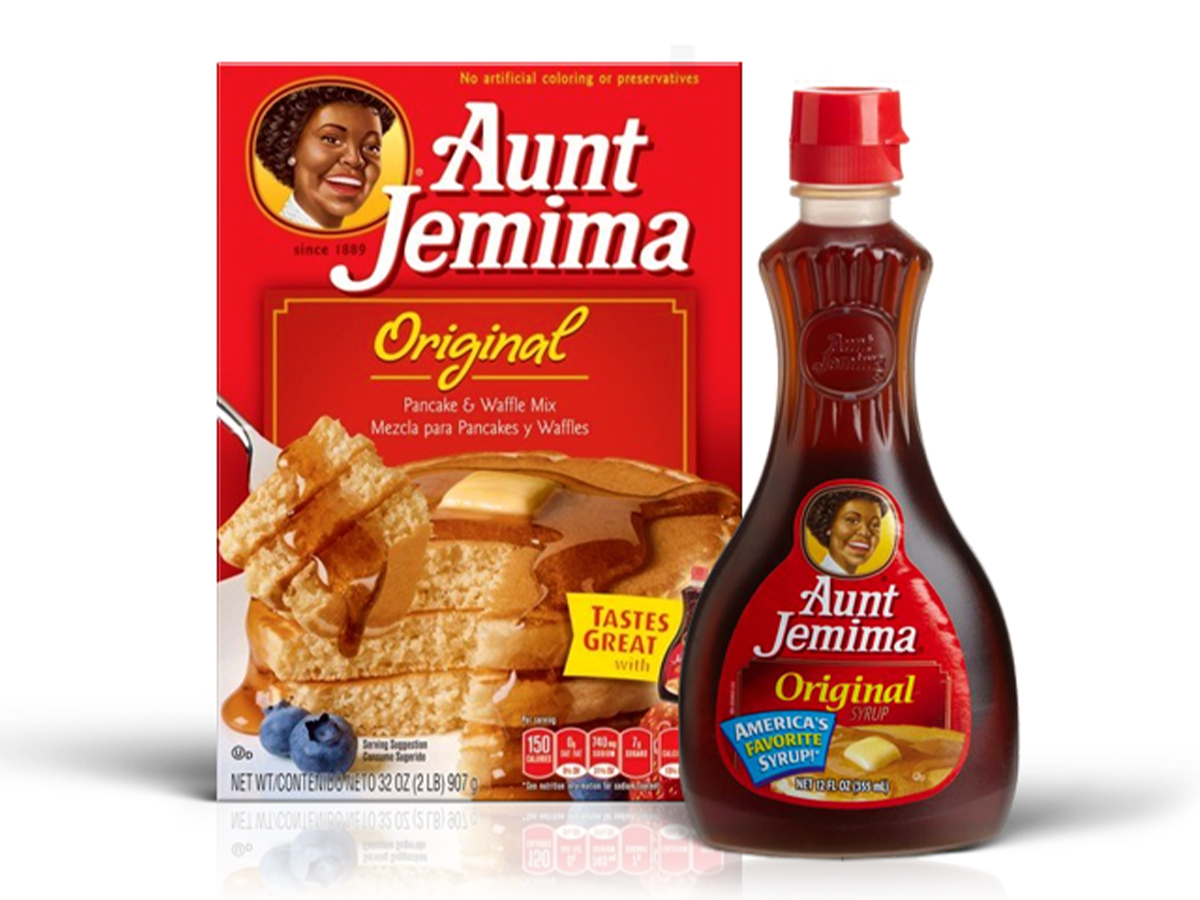
Aunt Jemima was actually a real woman. Nancy Green was recruited in 1890 to be the face of breakfast, and her whole image was based on the ideal image of nanny’s and cooks of the time. Needless to say, it isn’t acceptable in this day and age. The promotional material would include taglines like “the cook whose cabin is more famous than Uncle Tom’s.” Just wow.
Nancy Green was killed in an accident and was thanked by buried in an unmarked grave (that was sarcasm, by the way). Quaker finally realized that the image of Aunt Jemima was romanticizing the Old South and plantation nostalgia. The company decided to change, although they aren’t sure what to change the name to just yet. One thing is for sure: a change has been needed for a while.
TikTok

TikTok is has a huge following and millions of downloads. It’s filled with tons of funny videos, dances, and lip-syncing performances. The app didn’t start out as TikTok, however. Originally, it was called Musicl.ly. When it first released, it was designed for people to lip-sync and dance to popular songs.
Musicl.ly was purchased and merged with Bytedance Technology. At that point, Musicl.ly accounts were transitioned to TikTok, and the app gained more features. Now, the app has become Vine version 2, featuring funny, short skits, how-to tutorials, and tons of other stuff.
Subway

Do you want to grab a sandwich from Pete’s Super Submarines? Yeah, not exactly the best sandwich restaurant name. That’s exactly why the company changed. Instead of Super Subs, the business went with “Pete’s Subway.” Two years later, it became known as “Subway.”
Perfect name change. Some speculate it was done because the sandwich shop expanded across the nation, which is understandable. Now, Subway is one of the biggest fast food restaurants on the market. Guess the rebrand worked in their favor!
Mrs. Butterworth

Mrs. Butterworth is joining a long line of brands changing their name to reshape their image in the wake of the racial protests. Conagra, the parent company of Mrs. Butterworth’s, stated that Wednesday began a “complete brand and packaging review” of its products.
The package’s image is supposed to evoke the image of a grandmother, but the brand decided it was time to move toward change. There’s no news about what the new packaging will be. A rebrand can take anywhere from a few weeks to years.
Washington Redskins
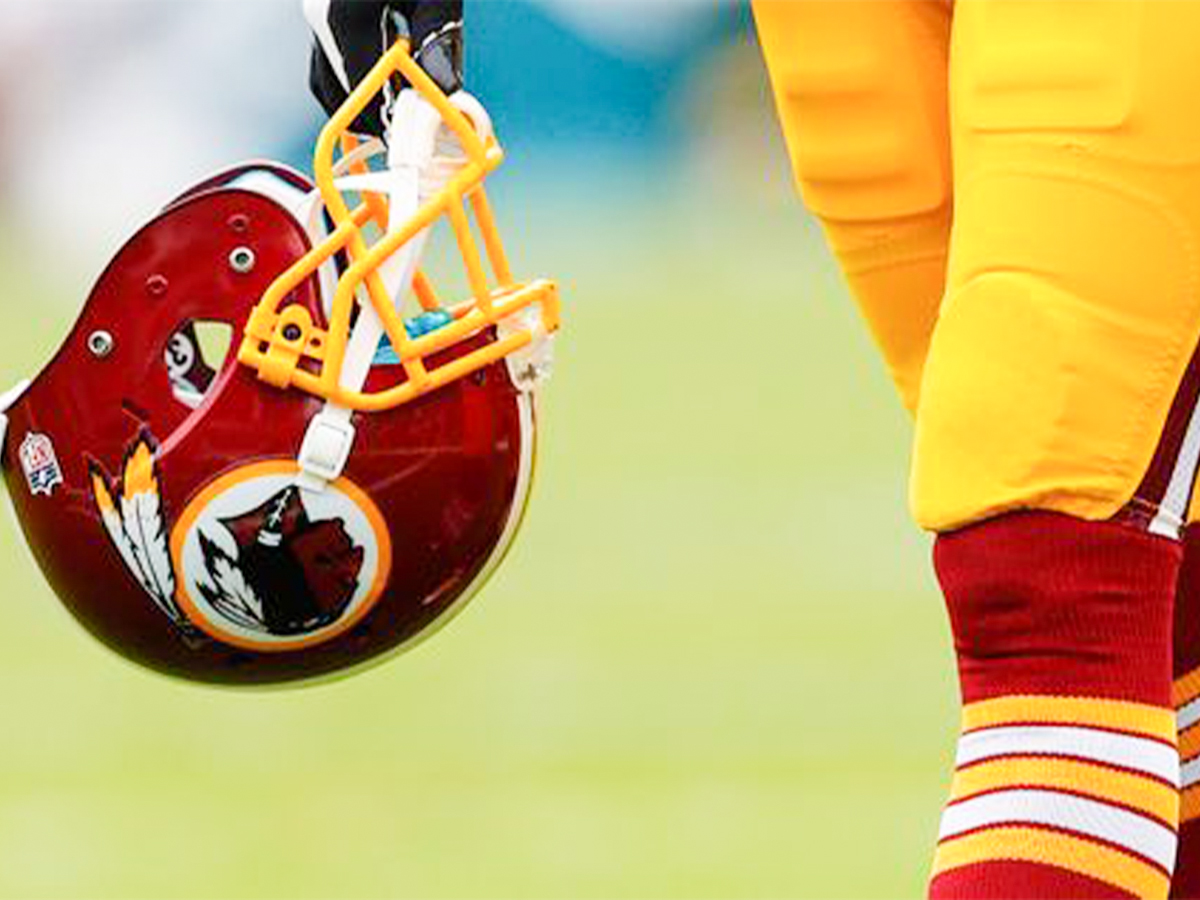
For the longest time, owners of the Washington Redskins declared that they weren’t going to change their name, despite “Redskins” being an offensive slur for Native Americans. Now, in the wake of the Black Lives Matter protests, the Washington Redskins are singing a new tune.
At the beginning of July, Washington Redskin’s owner Dan Snyder released a statement saying they were going to “retire the Redskins name and logo.” Snyder and head coach Ron Rivera are working closely to develop a new name and design that supports the history of the NFL team.
Uncle Ben
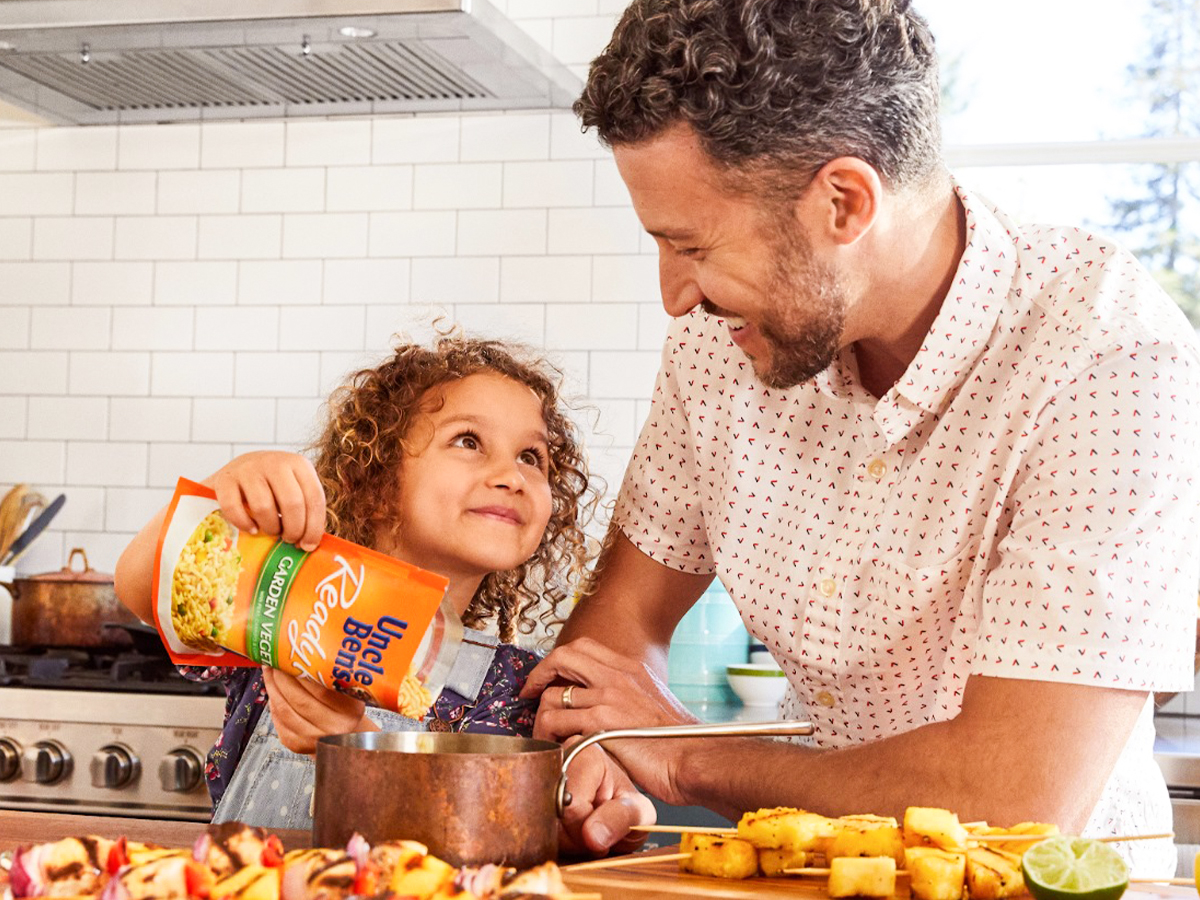
After Aunt Jemima decided to change its brand identity, Uncle Ben decided to follow closely behind. The company released a statement saying they were “considering a more substantive change and have begun that work even before news of Aunt Jemima.” Like Aunt Jemima, Uncle Ben was based on a person...well, two people.
One was a food broker by the name of Gordon L. Harwell, who supplied rice to the military during WWII. The Times reported that the image is actually from a portrait of a maitre d’ hotel, Frank Brown. Harwell took Brown’s image to started his company. Mars, Uncle Ben’s parent company, just began rebranding efforts, so it will take a bit before we see a new name or logo.
Eskimo Pie

What do you call the frozen treat that’s a chocolate-covered vanilla ice cream bar on a stick? Not an Eskimo Pie anymore. For nearly 100 years, the sweet treat’s packaging featured a young boy wrapped in clothing that’s reminiscent of indigenous Arctic clothing and labeled an “Eskimo Pie.”
The brand didn’t pay any attention to the fact that “Eskimo” was a slur used to refer to people from the Inuit or Yupik indigenous groups. The word actually means “eater of raw meat,” according to the Alaska Native Language Center. A new name hasn’t been announced just yet, but it could take a bit to find the one that fits the ice cream just right.
Cream of Wheat
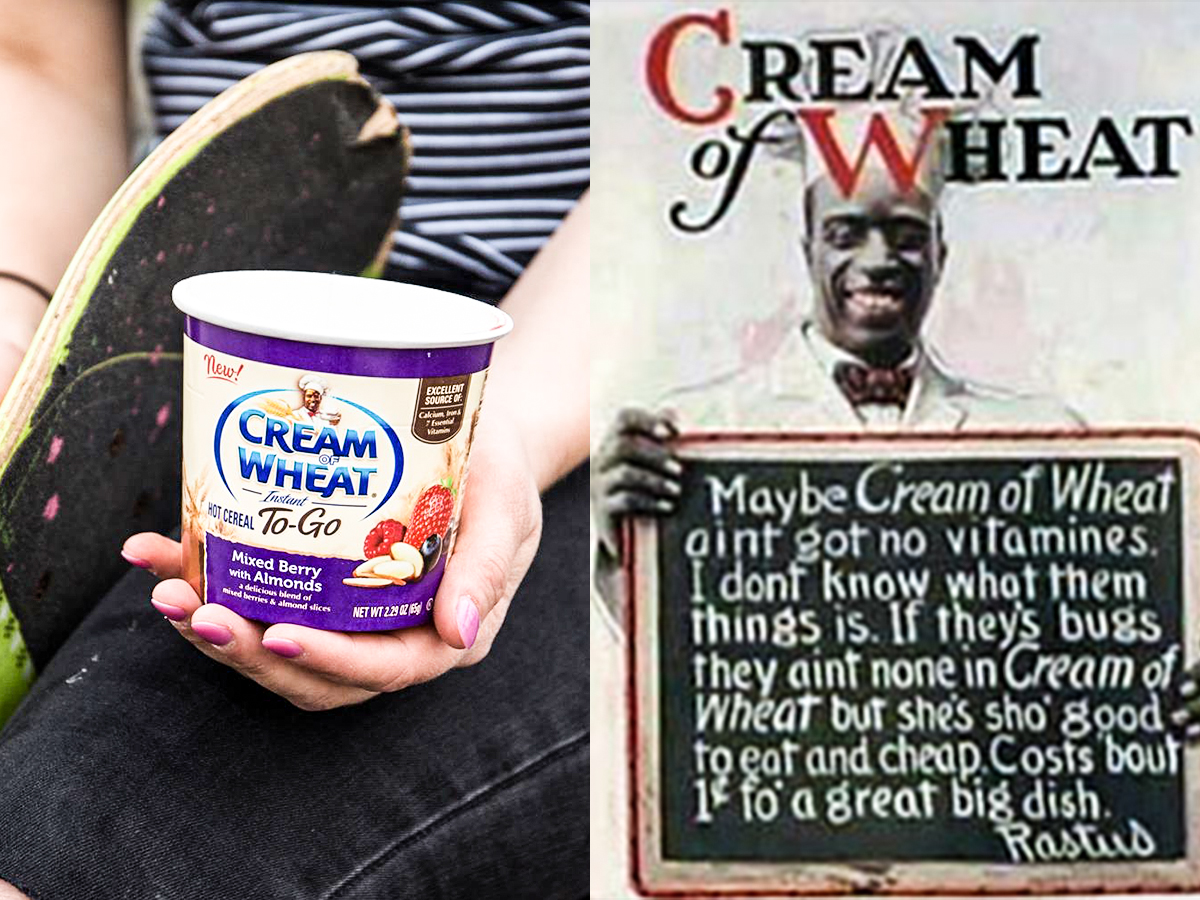
Cream of Wheat has featured Rastus on the cover for over a century, but that doesn’t mean it’s good. Rastus was created by Joel Chandler Harris, writer of the Uncle Remus stories. According to Historyapolis, Remus was supposed to be a “cheerful simpleton,” and the ads back that up. One shows Rastus thinking vitamins are bugs.
Today, this image is beyond offensive. The brand has dropped the racially offensive ads, but that doesn’t change the history behind him. Joining Aunt Jemima and Uncle Ben, Cream of Wheat will remove Rastus from its packaging in favor of a new logo. However, that logo hasn’t been chosen just yet.
Snapple
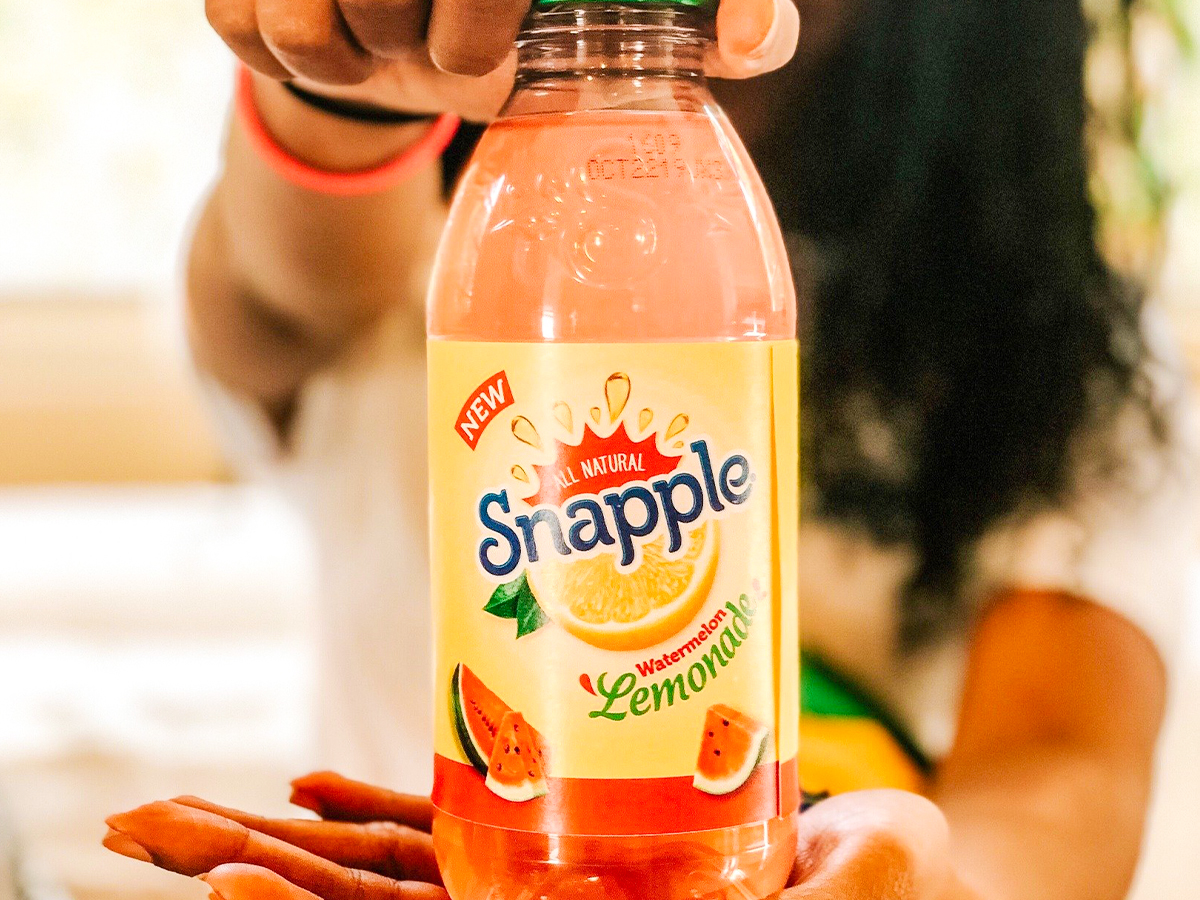
Before Snapple had its snappy name, it was called something a lot less…appealing – Unadulterated Food Products. You read that right. That was the name execs decided to roll with when the brand was first introduced. The company didn’t do too well after the debut to the public, and we have no clue why! We hope you sense our sarcasm.
During the late ’70s, the company created a carbonated apple juice and purchased the name “Snapple” for $500. Now that was a hit. The drink was flying off shelves, and the makers realized what they had on their hands. By the ’90s, the company dropped the whole “Unadulterated” schtick and focused on Snapple by forming Snapple Holding Corporation.
Dunkin’ Donuts

Dunkin’ Donuts has been an American staple for as long as anyone can remember. Nothing was better than stopping by Dunkin’ Donuts in the morning to grab some breakfast, but the company wanted more. As the fast food industry changed (and more consumers wanted coffee and other breakfast items), the execs realized they needed to make some alterations.
Enter Dunkin’ – or rather, exit Donuts! Dunkin’ dropped “donuts” from its name, despite the fact it continued selling the doughy goodness. It did this to put emphasis on the fact that it was selling coffee and other drinks. It also added other menu items like sandwiches. Dunkin’ became more than just a “donut place.”

The internet just wouldn’t be the same without Instagram. Now, the social media platform ranks third, only trailing behind YouTube and Facebook. It may be a shock to some that the popular app was once called Burbn. Originally named Burbn because of the creator’s love of whiskey, the app was designed after Foursquare.
It was a complicated system that allowed users to check-in at particular locations, make plans to check-in, earn points for hanging out with friends, and post pics of meet-ups. No one cared about the check-in feature, but the photo posting part? Wow, Burbn couldn’t keep up. The makers behind the app doubled down on the photo-sharing aspect, added filters, eventually changed the name to....Instagram!

Nowadays, you’d be hard-pressed to find anyone that wants a backrub from Google, but that’s what the brand was called. The creators of Google (and parent company Alphabet) love wordplay, and BackRub was just that. It was supposed to be a play on the fact the program analyzed the web’s “back links.”
Long story short, BackRub took too much bandwidth, so the creators went back to the drawing board. Googol was the name they discovered. However, when they searched for the domain, they mistyped and put in “Google.” Everyone liked that name more, so that’s what they rolled with! They registered the domain, and the rest is history. You can always Google it if you want to know more!
Amazon

If you type in “relentless.com,” you may be surprised that it takes you to Amazon. Why? The answer is simple. Amazon was Relentless! When Bezos was just getting started, he wanted to name his online bookstore Relentless. He purchased the domain and got ready to start everything up.
However, he stopped, and the Amazon came to mind – the world’s largest river by volume. Now, that certainly describes the website Bezos created! Even though he had Relentless set up, he moved forward with Amazon and had the old domain redirect to his new one.
eBay

We’ve all used eBay at one time or another. It’s still one of the most popular ways to list an item you want to sell, although Amazon is gaining ground every day. Ages ago, the site was once called AuctionWeb. In 1995, Pierre Omidyar launched AuctionWeb, a website “dedicated to bringing together buyers and sellers in an honest and open marketplace,” according to eBay’s website.
AuctionWeb sold over $8 million in merch (including $500 million during the Beanie Baby Craze) before it decided to change its name to eBay in 1997. The reason? Customers! Those who used the site referred to it as “eBay.” In fact, it was used more than the site’s actual name. So, the company decided to drop AuctionWeb in favor of eBay.
 Author
Jennifer Freehill
Last Updated: December 13, 2025
Author
Jennifer Freehill
Last Updated: December 13, 2025